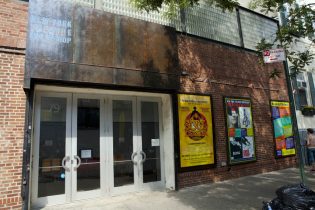
The New York Theater Workshop was founded in 1979 and is dedicated to ensuring the presence of artists in society. The New York Theater Workshop states that they do this in two ways, “…first through producing an annual season of productions in our 199-seat theatre in Manhattan’s East Village and second, by inviting theatre-makers at all stages of their careers to participate in activities that allow them to gain support for both themselves and their projects.”[8] The theater prides itself in showing works that are diverse and different than what the public would normally see. A highlight of the theater is that many of the productions that have taken place in this theater have become critically acclaimed. Shows that have been performed at the NYTW have received a Pulitzer Prize, seventeen Tony Awards, and assorted Obie, Drama Desk, and Lucille Lortel Awards. The NYTW has become a significant force in New York’s vibrant cultural landscape over the last forty years and is one of the leading producing theater in the United States.[9] The founder of the NYTW envisioned a place that would support new playwrights and directors outside the norm and develop new works of theater. Currently, the NYTW is located in the East Village where Rent takes place, so its significance to the play is twofold as well. Rent began performances at the NYTW on January 26th, 1996 and developed greatly in the two years of workshop activities it had had. Rent’s evolutions from concept readings, workshops, studio productions, and, finally, the production shows how committed the NYTW is to aiding the arts individually. Tragically, Jonathan Larson died the night before the first performance at NYTW, but his legacy, Rent, moved to the Nederlander and won the 1996 Tony Award for best musical.[10] The New York Theater Workshop has provided an outlet for playwrights and directors who have yet to make it big to showcase their work. The creators develop their projects into the final product that they are proud in the NYTW, and it has become an icon in New York Theater.